Join us for live streaming of the Honorary Doctorate Ceremony in Haifa at the Technion Board of Governors 2015.
Streaming on 15/06/15 will begin at 8:00 pm local time.
Responding on behalf of recipients: Prof. Michael Levitt.
Responding on behalf of recipients: Prof. Michael Levitt.
Technion – Israel Institute of Technology salutes its 2015 Honorary Doctors: Prof. Michael Levitt; Prof. Krzysztof Matyjaszewski; Prof. Arieh Warshel; Prof. Charles Weissmann; Mrs. Sandy Hittman – USA; Mr. Joel Rothman; Mr. Sanford I. Weill.
Technion Salutes its Honorary Fellows of 2015! Dr. Qanta Ahmed; Mr. Harry J.F. Bloomfield; Dr. Amit Goffer; Mr. Robert Hanisee; Mr. Avi Kerbs; Ms. Rebecca Boukhris; Ms. Sonia Marschak; Mr. Allen Prince.
Dr. Andrew J. Viterbi – a seminal figure in today’s digital society – has announced a gift of $50 million to secure and enhance the Technion – Israel Institute of Technology’s leadership position in electrical and computer engineering in Israel and globally.
This transformational gift will be recognized by the Technion through the naming of the Faculty of Electrical Engineering. The announcement was made on June 13, during the Technion Board of Governors meeting in Haifa, Israel.
“I am extremely proud to have my name associated with the Technion, Israel’s leading science and technology university, and one of the top institutions of its kind in the world,” Dr. Viterbi said. “Technion electrical engineering graduates are in large part responsible for creating and sustaining Israel’s high-tech industry, which has been essential for Israel’s economic success.”
Ranked among the world’s top 10 electrical engineering departments, the Technion Faculty of Electrical Engineering has been instrumental in advancing Israel’s tech industry and transforming the country into the “Start-up Nation.” In the early 1970s, the Faculty was the driving force in developing infrastructure and know-how in microelectronics, and the creation of electronic components that turned out to be crucial for Israel’s security and economic growth in the tech sector. Since then, it has paved the way for Israeli computer engineering, communications, microelectronics, optoelectronics, nanotechnology, and quantum technology.
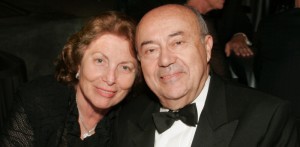
Over the last 20 years, some 1600 companies were founded and/or are being managed by Technion alumni; a stunning 35% were graduates of the Faculty of Electrical Engineering.
The gift from Dr. Viterbi will enable the Technion to retain and attract outstanding faculty and electrical engineering graduate students, and to upgrade the current teaching and research infrastructure. By helping bring the ratio of undergraduate students to faculty members in line with those at top American universities, this gift will play a critical role in preserving and enhancing the department’s global competitiveness.
“We are deeply grateful to Andrew Viterbi. His and his beloved late wife Erna’s longstanding involvement with the Technion and his understanding of the vital impact of electrical engineering on the state of Israel, will help the Technion recruit the best and brightest students and faculty members,” said Technion President Professor Peretz Lavie.
“This is a spectacular point in the growth and development of the Technion,” said Jeff Richard, Executive Vice President of the American Technion Society. “This gift will enable the Technion to maintain its place at the forefront of electrical engineering and its wide-ranging applications in industries ranging from medical devices to advanced computing.”
Dr. Viterbi is the creator of the Viterbi Algorithm, a mathematical formula used in many of today’s mobile devices. The Viterbi Algorithm allows rapid and accurate decoding of a plethora of overlapping signals, helping to eliminate signal interference. The mathematical formula is used in all four international standards for digital cellular telephones, as well as in data terminals, digital satellite broadcast receivers and deep space telemetry. Other applications include voice recognition programs and DNA analysis.
Dr. Viterbi’s roots at the Technion date back to 1967, when he gave a series of lectures there while on sabbatical from the University of California, Los Angeles. Those roots have since grown so strong that Dr. Viterbi’s name is as familiar to Technion engineering students today, as it was nearly 50 years ago. In 2000, he was named a Technion Distinguished Visiting Professor of Electrical Engineering.
Together with his late wife, Erna Finci Viterbi, he has a long history of support for the university and Israel. He is a Guardian, a designation reserved for those who have reached the highest level of support of the Technion. The Viterbis’ gifts have included the Andrew J. and Erna F. Viterbi Chair in Information Systems/Computer Science, held by Prof. Oded Shmueli, and the Andrew and Erna Finci Viterbi Center for Advanced Studies in Computer Technology and the Andrew and Erna Finci Viterbi Fellowship Program.
“Andrew Viterbi is more than a Distinguished Visiting Professor in our Faculty. He is a true pioneer in the field of electrical and computer engineering, whose algorithm, as well as many other pace-setting contributions, provide the basis for much of the communication and information technologies being developed today. We are extremely proud to be part of the Faculty that will bear his name,” said Distinguished Professor Jacob Ziv, who together with Professor Avraham Lempel created the Ziv-Lempel compression algorithm that contributed significantly in making the Internet a global communications medium.
Dr. Viterbi received a Technion Honorary Doctorate in 2000, and the Albert Einstein Award (the American Technion Society’s highest award) in 1993. He is also a member of the Technion Board of Governors, and has been actively involved with the American Technion Society at the national, regional and local levels.
As the co-founder of Qualcomm Corporation, Dr. Viterbi has received numerous awards for his contributions to communications theory and its industrial applications, including the Institute of Electrical and Electronics Engineers’ (IEEE) Alexander Graham Bell Medal, the Marconi International Fellowship Award and the IEEE’s Shannon Award and Lecture, considered the highest honor in communication technology. In 2001, Dr. Viterbi, who was born in Italy, was named a “Grande Ufficiale della Republica” by the President of Italy. He was recognized by former U.S. President George W. Bush in 2008, with the National Medal of Science for developing “the ‘Viterbi Algorithm’, and for his contributions to Code Division Multiple Access (CDMA) wireless technology that transformed the theory and practice of digital communications.”
“It is a great honor to have Professor Viterbi’s name associated with our Faculty,” said Professor Ariel Orda, Electrical Engineering Dean. “It is a rare combination for a Faculty to be affiliated with the name of a scientific and technological giant while teaching his scientific contributions in advanced courses of its curriculum. Professor Viterbi and his wife, the late Erna Finci Viterbi, have been our dear friends and devoted supporters for many years. This extraordinary gift from Professor Viterbi ensures our position as a global center of academic excellence, enabling us to fulfill our vital role in the security and prosperity of the State of Israel. Moreover, this gift paves the way to new horizons and higher attainable levels of scientific and technological achievements.”
Andrew Viterbi is an alumnus of the Massachusetts Institute of Technology and the University of Southern California. His was one of the first doctorates in electrical engineering granted by USC (’62). In 2004, he and his late wife, Erna Finci Viterbi, provided the naming gift for USC’s Andrew and Erna Viterbi School of Engineering. Other gifts to the university include the Andrew and Erna Viterbi Chair in Communications, the Andrew J. and Erna Finci Viterbi Executive Director Chair at the USC Shoah Foundation, and various scholarships in engineering and genocide studies.
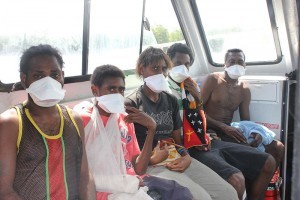
“In regions where poverty became a master, the Bill and Melinda Gates Foundations is an indispensable source to efficiently harness the wisdom of experts and the insight of the pertinent global health and development challenges. With the support of the Gate’s Foundation, we are developing an array of rapid, accurate, and affordable tool that shall contribute for increasing the survival rate of Tuberculosis patients, and, also, in arresting the disease transmission. Ultimately, we hope these advances could contribute for the democratization of health globally.” Said Prof. Haick
In 2012, Prof. Hossam Haick was awarded a Phase I grant for BMGF program. Grand Challenges Explorations (GCE) Phase I recognizes individuals worldwide who are taking innovative approaches to some of the world’s toughest and persistent global health and development challenges. GCE invests in the early stages of bold ideas that have real potential to solve the problems people in the developing world face every day. Phase II recognizes those ideas that have made significant progress toward implementation.
Prof. Hossam Haick’s project is one of the Phase II Grand Challenges Explorations grants announced today.
More than two billion people are estimated to be infected with M. tuberculosis (TB), from which 10% progress to active tuberculosis during lifetime. About 95% of TB cases occur in developing countries, where individuals live on $1 per day. The ultimate goal of the present project is the development of a stand-alone TB test consisting of adhesive patch that allows immediate diagnosis of TB from skin samples within 2-5 min at much lower costs and greater affordability than the current approaches. The novel TB sensing patch is designated for application on the chest of the patient, either in the clinic or by the patient at home, and will be suitable for children as well. The possibility of performing the test at home by the patient will allow the patient to participate actively in the prevention and detection of TB by continuous monitoring of at-risk populations such as health workers, family members of TB patients, smokers, HIV-carriers, etc. This 2-5 minute examination results in either a GREEN LIGHT when the user is healthy (i.e., has no TB) or RED LIGHT when active TB is present.

The development of rapid, accurate, and affordable sensing patches for diagnosis of “active TB pulmonary disease vs. non-TB pulmonary disease and latent TB” will contribute for increasing the survival rate of TB patients, and, also, in arresting the disease transmission. Successful completion of all of these short-term and long-term goals will provide TB sensing patch that could be used at resource-poor central reference laboratories, hospital and clinic laboratories, and/or at the point-of-care, thus helping to increase the TB screening and saving at least 400,000 lives every year.
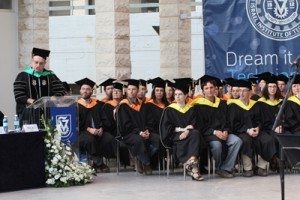
Dr. Stefania Pellegrinelli, the first graduate of the joint double-Ph.D. track at the Technion and the Politecnico di Milano addressed the gathering on behalf of the graduating students. Throughout her studies, whose curriculum was established as part of the cooperation between the Technion and the Italian university, Dr. Pellegrinelli was advised by professors from both institutions and spent a year at each of them, ultimately receiving a Ph.D. from both universities. Dr. Pellegrinelli, who spoke in both Hebrew and Italian, specializes in planning the robotic assembly in production lines, and during her Ph.D. studies designed a robotic production line for a subsidiary of the Italian car manufacturer Fiat. Her advisor at the Technion was Prof. Anath Fischer of the Faculty of Mechanical Engineering.
“I attended a high school that focused on academic studies and my favorite subject was math,” recalled Dr. Pellegrinelli after the ceremony. “For my Ph.D. studies at the Technion I decided to specialize in robotics. The relationship between lecturers and students at the Technion is much more personal and I really enjoyed my studies here.”
California could learn a thing or two about innovative water technologies from university researchers in Israel and Texas, whose joint desalination project won the Honorable Mention award in a USAID competition. A prize of $125,000 grant will be used in the near future to build a groundwater treatment plant in Jordan.
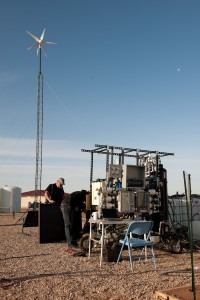
Driven perhaps by a common pioneering spirit or the aridness of their land, researchers at the Technion-Israel Institute of Technology in Haifa, Israel and the University of North Texas teamed up to enter the competition held by USAID— the United States Agency for International Development. The competition’s goal was to develop innovative technology for producing food and potable water in the Third World, using sustainable alternative energy. “By 2050, global water demand is expected to increase by 55%, and 70% of global water use occurs in food production,” said Christian Holmes, USAID Global Water Coordinator.
Researchers at the Technion’s Stephen and Nancy Grand Water Research Institute joined the competition at the request of researchers from the electrical engineering department at the University of North Texas. The American researchers, who focused on developing a solution to the alternative energy aspect of the competition, asked Prof. Carlos Dosoretz and Prof. Ori Lahav, researchers from the Technion Faculty of Civil and Environmental Engineering, to design a solution for the desalination aspect, and to submit a joint proposal. Other researchers from universities in Jordan, Nepal and Brazil also participated in this project.
“Hundreds of proposals from around the world were submitted in this competition,” explains Prof. Ori Lahav, who heads the Stephen and Nancy Grand Water Research Institute, where the desalination system was designed. “At the end of 2014 our proposal advanced to the semi-final stage, along with the proposals of seven other groups.” Six groups participated in the final round, which was held last month in the deserts of New Mexico. The participating teams were given two days to set up a complete, fully operational pilot system, and operate it autonomously for 48 hours to demonstrate its effectiveness in the field.

“The water treatment process was based on an innovative combination of three technologies – reverse osmosis, ion exchange and nano- filtration,” explains Prof. Lahav. “The challenge was to find a solution for problematic water characterized by particularly high concentrations of dissolved calcium and sulfate.” University of North Texas researchers used a combination of wind and solar energy to power the system.
The group in which the Technion participated included the engineer Ran Nahir and Dr. Liat Birnhack, of the Faculty of Civil and Environmental Engineering. The group was placed among the top three winners, making it eligible for $125,000 in financing for the implementation of innovative technologies in the Third World. Massachusetts Institute of Technology (MIT), jointly with Jain Irrigation Systems, won first place.
USAID is a division of the U.S. State Department with financial aid from Sida, the Swedish International Development Cooperation Agency and The Ministry of Foreign Affairs of the Kingdom of the Netherlands.
Technion President, Prof. Peretz Lavie, awarded the Harvey Prize to Professor James P. Allison, prominent cancer researcher, and Professor Doctor Reinhard Genzel, internationally acclaimed astrophysicist, at a festive awards ceremony held at the Technion. Professor Allison, an immunologist from the University of Texas MD Anderson Cancer Center in Huston, Texas, was awarded the Harvey Prize in Human Health, and Professor Doctor Reinhard Genzel, an infrared and submillimeter experimental astrophysicist from the Max Planck Institute for Extraterrestrial Physics in Germany, was awarded the Harvey Prize in Science and Technology.
The Harvey Prize named after the late Leo M. Harvey (1887-1973), awards each year a sum of $ 75,000 to outstanding individuals who have made significant contributions in the fields of science and technology, human health, and the furtherance of peace in the Middle East. This prestigious prize is considered by many a precursor to the Nobel Prize; 13 Harvey Prize winners went on to win the Nobel Prize. Among them is esteemed Professor Shuji Nakamura who was awarded the Nobel Prize in Physics last December for inventing the blue LED, a major breakthrough in lighting technology.
Professor James P. Allison, who is the Chairman of the Department of Immunology at the MD Anderson Cancer Center, received the Harvey Prize for developing a new paradigm for cancer treatment and for his theoretical and practical contributions to cancer treatment, which transformed the fields of basic and tumor immunology. The MD Anderson Institute, affiliated with the University of Texas, is ranked as one of the nation’s best hospitals for cancer care in the United States.
Prof. Allison, who was born in Texas in 1948, specializes in the field of immunotherapy – treatment by means of strengthening the immune system – particularly in the context of cancer treatment. Allison has a longstanding interest in T cells, which play an important role in the immune system, and his research led him to discover a T-cell inhibitory molecule (known as CTLA-4) which can prevent them from attacking tumors. Following this discovery, Alison developed an antibody to block this inhibitory molecule in the hope that it will enhance anti-tumor immune responses and tumor rejection. His research led to the clinical development of Ipilimumab (Yervoy™), which was approved in May 2011 by the FDA for the treatment of metastatic melanoma. Today, Allison investigates possibilities for applying Ipilimumab and similar inhibitory drugs-treatments in treating other forms of cancer, such as lung, kidney, prostate, intestinal and breast cancer.
In his opening speech, Professor Pertz Lavie described Professor Allison as, “A person of courage and independence, who is not afraid of going against conventional wisdom. In the 1990’s, after the scientific community had all but given up on the idea of cancer immunotherapy – it was Prof. James Allison who kept the flame alive, and eventually succeeded.”
“As a kid I was very curious and always wanted to solve puzzles,” began Prof. Allison in his acceptance speech. “I wanted to be the first to know something that no one else did. I taught myself many subjects and so I got a lot of experience solving puzzles. This is my first visit to Israel and to the Technion, and I was amazed at the high scientific level of researchers and students that I met here. My research stems from my desire to better understand the immune system, and I am very pleased to have developed a drug to help people while on this quest. Doctors tend not to talk about cancer treatment in terms of ‘healing,’ because conventional treatments are always temporary, with cancer having a way of ‘stalking’ a person later on in life. However, there is justification in likening immunotherapy to ‘healing.’ Patients who were treated using our method have reached the 10 year mark, living far longer than the prognosis of a few short months.”
Professor Doctor Reinhard Genzel received the Harvey Prize for showing irrefutable evidence of a massive black hole in the center of the Milky Way (our galaxy) through his development of many nobel ground, airborne and space based instruments that enable the tracking of the motion of stars with unprecedented precision extremely close to the Galactic Center.
Prof. Genzel, who was born in 1952 in Bad Homburg v.d.H., Germany, is a faculty member at the University of California, Berkeley and is the Director at the Max Planck Institute for Extraterrestrial Physics in Garching, Germany. In 2002, Genzel discovered, along with research colleagues in Germany and California, a massive object at the center of the galaxy whose size was smaller than that of the solar system, yet its mass was more than 3 or 4 million than the mass of the sun, in other words, a very massive black hole. This determination was based on the exceptional acceleration of stars surrounding the Galactic Center. Genzel used innovative optical methods and infrared photography to overcome atmospheric disturbances and particles floating in space.
In his opening address, Professor Pertz Lavie shared an excerpt he found to best describe his achievements, “’Prof. Genzel developed instrumentation which enabled him to make outstanding discoveries, including evidence for a massive black hole in the center of our galaxy.’ Think of how amazing that is. We have with us today a scientist who not only made great and important discoveries, but also an innovator who has invented the tools he needed to make those discoveries. A real, twenty-first century Galileo Galilei.”
In his acceptance speech, Prof. Genzel thanked the Technion for this important prize and said, “This is a very meaningful event for me, and I am deeply moved to receive this prize on the year marking the 50th anniversary of diplomatic relations between Germany and Israel. I say this not only because of the past, but also because of the high quality of research and researchers coming out of Israel.
Astronomy is considered to be one of the most ancient sciences, yet the modern tools at our disposal today are expanding our expertise in this field, while pushing forward the frontiers of human knowledge. They allow us to observe, analyze and understand phenomena in space that were previously hidden from our view.”
The Harvey Prize awarded by the Technion was first given in 1972, through the foundation established by Leo M. Harvey from Los Angeles, in order to recognize significant contributions in the advancement of humankind in the areas of science and technology, human health and peace in the Middle East. This prestigious prize has been awarded to scientists from the United States, Britain, Russia, Sweden, France and Israel, among them Nobel Laureate Mikhail Gorbachev, former leader of the USSR, awarded the Harvey Prize in appreciation of his seminal initiatives and policies to lessen regional tensions; Nobel Laureate in Medicine, Professor Bert Sakmann; Nobel Laureate in Physics, Professor Pierre-Gilles de Gennes, Professor Edward Teller for his discoveries in solid state physics, atomic and nuclear energy; and Professor William J. Kolff for his invention of the artificial kidney.
“Science leads you in directions you hadn’t thought of, and you have to navigate your way through it.
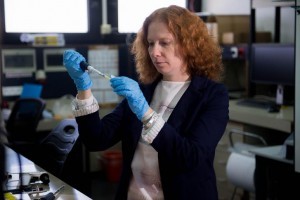
Assistant Professor Reut Shalgi returned from MIT to Israel thanks to the Technion, where she currently investigates regulatory mechanisms of protein synthesis at the Rapapport Institute of Medical Research.
“As a scientist, I have access to an endless world of research topics. Science leads you in directions you hadn’t initially thought of, and you have to navigate your way through it, but at the same time to let it lead you.”
Assistant Professor Reut Shalgi, who this week was awarded the prestigious Alon Fellowship for Outstanding Young Faculty, joined the ranks of the Technion faculty last year. Currently, as a member of the team at the Technion’s Rapapport Institute of Medical Research, she investigates the mechanisms of translational control by the ribosomes.
She graduated cum laude from Tel Aviv University in 2002, with a double major in Biology and Computer Science. Her final project explored what was back then the emerging field of Bioinformatics, which applies tools from statistics and computer science to biological and pharmacological research.
Thanks to her computer science skills Prof. Shalgi began, while still an undergraduate, to work in the hi-tech company of RadVision. But the search for new challenges led her to enroll in the Life Sciences Master’s degree program at the Weizmann Institute. With the guidance of Prof. Yitzhak Pilpel and Prof. Ron Shamir she used bioinformatical methods to study mechanisms that regulate gene expression – and was captivated by the world of scientific research. “During my Masters I realized I wanted to be a scientist – to understand how cells function, investigate the ways in which they can malfunction and find ways of correcting them.
“We work in the new and fascinating field of systems biology, increasingly integrating biology and computer science, and using genome-wide data and bioinformatical tools,” Assistant Professor Shalgi explains. “Systems biology gives us an broad view of the biological processes taking place inside the cell, whereas classic biology examines these processes in depth.” She went on to undertake her PhD at the Weizmann Institute, with Prof. Pilpel and Prof. Moshe Oren as her advisors. “My research focused then on the regulation mechanisms of micro-RNA – small molecules that are genes but that do not encode proteins. Every stage in protein synthesis is controlled by numerous factors inside the cell. I investigated the interrelationships and the coordination between different levels in this network.”
In 2009, after she completed her Ph.D., Assistant Professor Shalgi went to pursue her post-doctoral studies at MIT. Under bioinformatics expert Prof. Chris Burge and Prof. Susan Lindquist, a world leader in the field of chaperones (specialized proteins that facilitate the correct folding of other cellular proteins, which is essential for their proper function), Shalgi studied translation control mechanisms in cells under stress, as well as the interrelationship between chaperones and the ribosome. It was at this time that she discovered a previously unknown mechanism of translation control: chaperone-mediated ribosome pausing during the translation process. She continues to research this mechanism in her own lab.
The pausing occurs in response to extreme environmental conditions, and is mediated by the chaperones and their interaction with the ribosome. Upon relief from stress, the essential process of protein synthesis resumes.
“We think that this mechanism is also involved in neurodegenerative diseases, such as ALS, Alzheimer’s, Parkinson’s and Huntington’s diseases, among others,” she adds, “conditions in which proteins misfold and aggregate [accumulate and clump together]. We are currently studying how ribosome pausing is linked to these pathologies.”

She has very good memories of her five post-doctoral years in Boston, during which her first daughter was born – but “I really wanted to come back to Israel, to my family and friends. The Technion gave me a very warm welcome, and last October we returned to Israel – thanks to the Technion. I came back from MIT with several cutting-edge research methodologies, which I brought with me to my new lab at the Faculty of Medicine.”
One of these methods involves high throughput screening of protein-protein interactions performed by a robot, which can screen thousands of protein pairs per day and produce quantitative information on the interactions between each pair of proteins. Assistant Professor Shalgi analyses this data using bioinformatics tools, and maps the control network that governs the cell’s translation system and the interactions among the proteins: “The robot enables me to map out entire protein networks rapidly, and I use bioinformatics tools to analyze the cross-talk between the components in this network, and translation regulators.
“In my lab we integrate biology with genome-wide methodologies and bioinformatics to study the cell as a system. Our unique approach is to look at the cell as a system in which every component must not only function properly on its own but also be coordinated with all other components.”
She never felt that she had to compromise her scientific or research excellence with the move from MIT to the Technion. “The Faculty and the Technion offer me the highest standards possible. It’s a very diverse faculty with a good, strong interface between clinical and scientific research. The Technion’s new major in Medical Sciences offers the Faculty’s students an opportunity to get to know the science and possibly become researchers. Everyone knows what a medical doctor does, but not everyone understands what it means to be a researcher, what it is that researchers actually do on a day-to-day basis. An M.D. treats patients with the tools available to them, but the development of a new drug or treatment requires in-depth understanding of the mechanisms that lead to the disease, and that’s what we as researchers aim for. Some medical doctors manage to do research alongside the clinic, but it’s the full-time researchers who can delve deeply into the processes that cause the disease.”
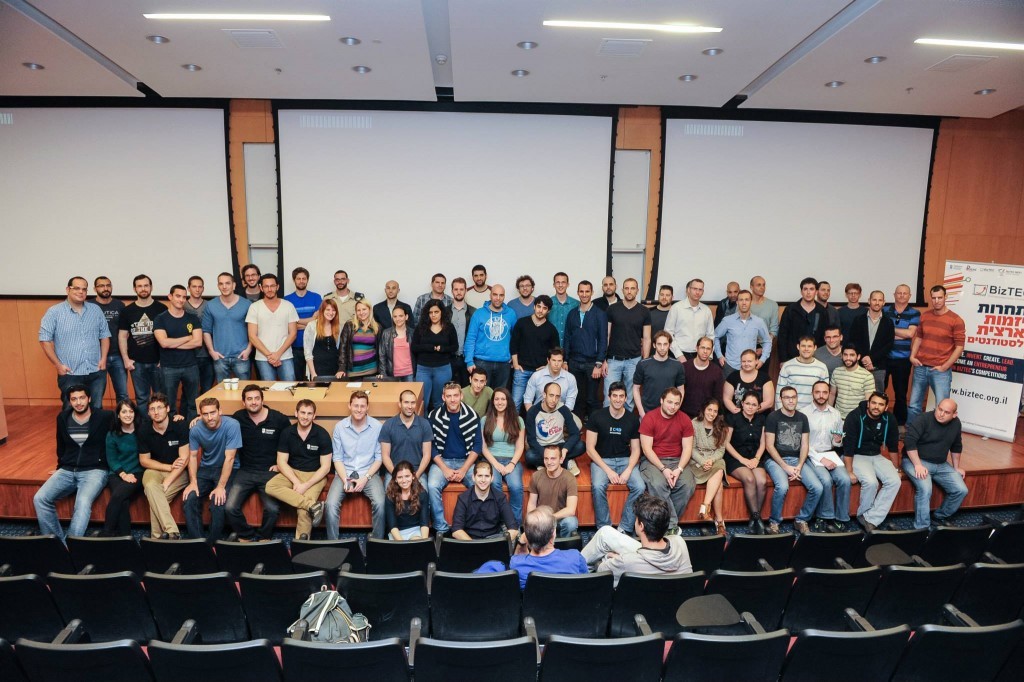
In early April, the New York Times reported an investment of $60 million in the new start-up of Technion graduate Tomer London. ZenPayroll is London’s second start-up and is already valued at over half a billion dollars. Google’s investment arm is behind this investment.
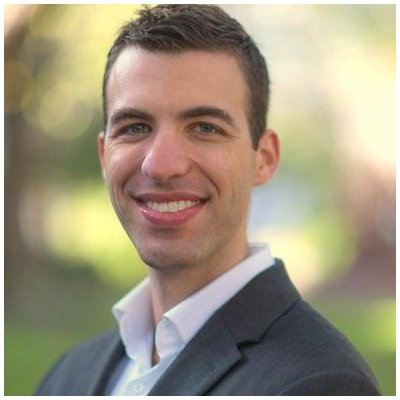
London’s first success in the field of entrepreneurship was recorded in 2009, when he won first place in the Technion led BizTEC competition with the company he had founded just months earlier. At the time, he was a student at the Faculty of Electrical Engineering, and in order to set up Vizmo he left his job at Intel and joined forces with fellow student Assaf Revach. The two outstanding students said at the time that the Technion gave them three things: “First, we became acquainted with each other here. Second – the Technion entrepreneurship and innovation laboratory and the diverse services that it provides. Third – the Technion Entrepreneurs Club. The Technion is undoubtedly Israel’s entrepreneurship incubator and it must stay that way.”
Tomer London isn’t the first to leap from the BizTEC springboard into the world of entrepreneurship. During these ten years, innovative projects in a wide range of fields have been developed as part of the competition. In 2006, the winner was LifeBond, which developed a liquid biological bandage that stops massive bleeding and has raised approximately $30 million since then.
The winner in 2007 was PolyTouch, with a technology for streamlining laparoscopic hernia surgery (the company was sold some three years ago for $40 million). In 2008 – DataStrata, an interactive system that allows hotel guests to order services at the hotel and from the outside, (the system is already in operation at various hotels). 2009 – Vizmo, as stated, which developed a system enabling callers to order services during their conversation with the call center. 2010 –Windward, an accurate digital mapping system for oceans and seas, including territorial waters and vessels, which has raised $5 million since then. 2011 – Pixtr, which has developed algorithms for automatically enhancing photos. 2012 – Yevvo, an app that allows sharing of live video by smartphones (last year it raised $3.7 million, and now it has raised $14 million and changed its name to Meerkat). 2013 – Breezometer, an app for monitoring air pollution levels by smartphone (the company raised $600,000, and will open offices in the US this year after the product is launched there). In 2014, the winner was Augmedics, with a support system for surgeons using 3D simulation (three months later, the company joined a leading technology incubator).
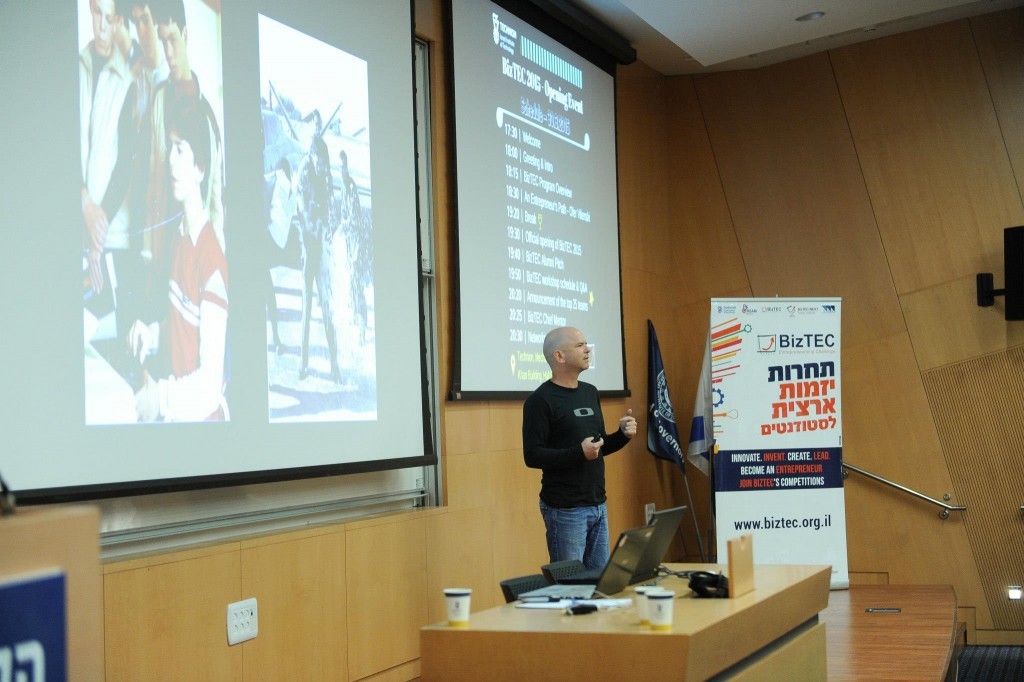
The BizTEC competition was established at the Technion in 2005 as a students’ initiative, designed to foster entrepreneurship among students at the Technion, and over the years has become Israel’s leading student entrepreneurship competition. Today, the competition is open to students for all degrees and to recent graduates. Participants include students from around 15 campuses in Israel.
This year, the tenth anniversary of its establishment, over two hundred student-entrepreneurs entered the contest, 60% of them students at the Technion. On March 30, the opening event for this year’s competition was held at the Technion. The keynote lecture at the event was delivered by entrepreneur Ofer Vilenski, who spoke about entrepreneurial motivation and “the road from idea to success story”. Another speaker was Nissan Elimelech, founder of Augmedics and BizTEC winner in 2014. The event was attended by around 200 young entrepreneurs, former participants in the competition and senior industry figures. Out of 80 competing teams, 30 teams were selected. They will participate in a yearlong program that includes lectures, workshops, guidance by industry-leader mentors, working in the accelerator, and a Demo Day, where the winning team will be announced. The prize for the winners: $10,000.
During its ten years of existence, the competition has produced 122 startups, which have raised over $100 million. “Start-up companies rise and fall on the quality of the team,” says competition director Tomer Aharonovitch, “and our job is to help students realize their ideas towards the establishment of a successful company.” Rafi Nave, director of the Bronica Entrepreneurship Center at the Technion, says “all participating teams address a real problem or unmet need, thus, they all have genuine potential to achieve business success. Furthermore, the main thing is not winning the competition, but rather the experience that the teams acquire, that provides them with the skills essential to business success and especially the motivation to initiate and innovate.”
A $1.6-million gift to the University of Waterloo and Technion-Israel Institute of Technology by The Gerald Schwartz & Heather Reisman Foundation is enabling world-changing research in a range of disciplines, including research into lung disease and quantum computing.
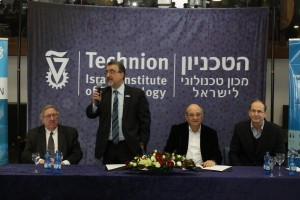
“This gift shows what a partnership between two of the world’s top innovation universities supported by the vision of Gerald Schwartz and Heather Reisman can accomplish,” said Feridun Hamdullahpur, president and vice-chancellor of the University of Waterloo. “This visionary donation is already allowing us to accelerate progress in the key areas of quantum information science, nanotechnology and water. Collaboration between Waterloo and Technion will lead to new innovations that will help to shape the future of communities, industries and everyday life.”
”The collaboration between the University of Waterloo and the Technion focuses on joint research between Israeli and Canadian scientists in areas crucial to making our world a better place”, said Technion President Prof. Peretz Lavie. “I cannot think of a better partner for such projects than the University of Waterloo, and it is the vision and generosity of Gerald Schwartz and Heather Reisman that are making this promising partnership a reality”.
Among the researchers the gift supports, Professor Frank Gu will expand his work into targeted drug delivery for eye diseases to include pulmonary diseases.
Targeted drug delivery uses nanotechnology to carry medicine directly to the diseased area improving the effectiveness of the treatment and minimizing side effects by reducing toxicity in other parts of the body.
With highly efficient and effective drugs currently available for many diseases and conditions, researchers are advancing the management of disease by improving delivery of the drug rather than developing new treatments.
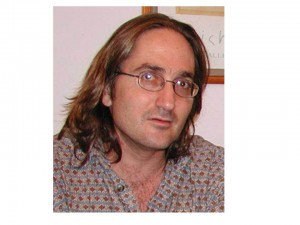
“There are many organs that we can live without but we can’t survive without a lung. The lung is such a critical component to quality of life,” said Prof. Gu, from the Faculty of Engineering at Waterloo and Canada Research Chair in Nanotechnology Engineering. “The problem with these drugs is they aren’t getting to the right target. Our goal is to make these particles so small and so smart, and efficiently transport these therapeutic compounds to the right place.”
The research is a joint project between Waterloo’s Gu from the Waterloo Institute for Nanotechnology and Prof. Josué Sznitman, from the Faculty of Biomedical Engineering and the Russell Berrie Nanotechnology Institute at the Technion, an expert in targeted drug delivery systems in the nasal area.
Prof. Sznitman: Premature newborn infants are frequently born with a deficiency of pulmonary surfactant, the soapy liquid that lines our lungs and is essential for easing every breath we take. Surfactant Replacement Therapy (SRT) is used to treat premature infants where artificial surfactant is instilled in the intubated neonate. Often, however, the liquid has to be administered more than once and such interventions remain a distressing experience for a newborn. Our work is aimed at improving strategies for SRT delivery where clinicians need to know how much of the initial dose will reach the targeted airways.
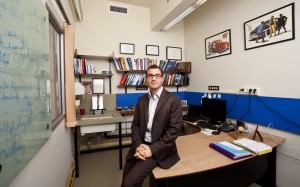
Given the success of drug delivery research, being able to focus on conditions of the lung is considered an opportunity to revolutionize treatment for conditions that are highly prevalent and affect large numbers of people.
Gu’s project is funded by a grant awarded through the Waterloo-Technion Research Cooperation Program. The program was created to facilitate joint research projects between Israeli and Canadian scientists in the areas of quantum information science, nanotechnology, and water. Funding for the cooperation program is part of an overall $1.9 million donation from The Gerald Schwartz & Heather Reisman Foundation.
The Waterloo-Technion Research Cooperation Program is also funding research into quantum computing. The ultimate goal of quantum information science is to build a scalable, universal quantum computer. A quantum computer will provide computational capabilities that cannot be achieved with classical computers for applications including database search, machine learning, drug design, information security and more.
One of the challenges of building a quantum computer is controlling the quantum systems to behave the way we want because they are extremely sensitive to any disturbance.
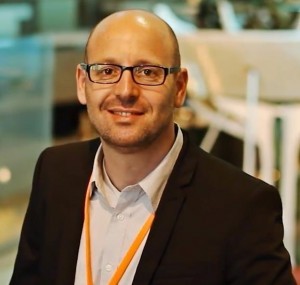
“Along with our colleagues in Technion’s Qubit Group, we will explore theoretical and experimental algorithms to cool quantum systems and thus reduce noise,” said Raymond Laflamme, Executive Director of the Institute for Quantum Computing (IQC) at Waterloo. “Quantum computation allows the most precise and efficient processing allowed by nature.”
“Heat-bath algorithmic cooling” – first suggested by Tal Mor and collaborators, and first implemented by Laflamme and collaborators – is an important method for cooling quantum systems using quantum algorithms and heat-flow analysis instead of using conventional physical cooling.
“It is great to have this opportunity to advance much further this field of research, and especially – together with this excellent team from IQC”, said Tal Mor, the coordinator of the Technion’s Qubit Group (TQG). “The main goal for establishing TQG was precisely for such purposes of advancing collaboration with world leaders in the field of quantum computing and information sciences, and the main goal of this current research is to advance algorithmic cooling much further together with TQG’s and IQC’s experts in (nuclear and electron) magnetic resonance and magnetic imaging.”
The new project includes Laflamme, IQC faculty Adrian Lupascu and Jonathan Baugh, and Professors Aharon Blank, Tal Mor and Itamar Kahn of Technion.
The Waterloo-Technion Research Cooperation Program was established in March 2014 beginning with a joint conference funded by The Gerald Schwartz & Heather Reisman Foundation and held at Technion’s main campus in Haifa, Israel. Gu and Laflamme’s work are two of 10 new projects between the two universities funded by the $1.6 million gift, shared between the two universities. Other projects range from the removal of organic pollutants in drinking water to an interdisciplinary research project at the interface of soil science, groundwater hydrology, biogeochemistry and geophysics.